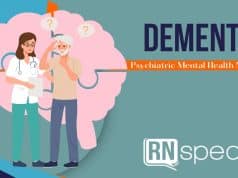Post-traumatic Stress Disorder (PSTD) is developed by people who suffered a crisis that traumatized them. For example, a person who lost his child because of flash floods will find himself agitated at the slightest hint of rain. A soldier who just survived a war will find himself easily startled when something drops. A woman who was raped will find herself having difficulties forming relationships.
PTSD is classified under Anxiety Disorders. A person who has PTSD will experience flashbacks of a traumatic event that a person has experienced or witnessed which is serious enough causing him or her impairment in his or her ability to function as a person. Symptoms range from nightmares to thoughts of suicide.
PTSD can affect nearly every aspect of the person’s life depending on the extent of its effect on a person. Usually, people with PTSD are irritable, anxious, and fatigues. They have a tendency to be socially-withdrawn too. At times, they are hyper-vigilant, easily aroused, and startled. Most develop survivor’s guilt especially if the traumatic event caused the loss of multiple lives.
PTSD can be acute or chronic. PTSD is acute if symptoms appear within 6 months while it is chronic if symptoms begin later than 6 months. There is remission within 6 months in 50% of cases.
These events include disasters, wars, accidents, and acts of violence. It is estimated that 5-10% of people in the United States have experienced PSTD at some point in their lives. In the Philippines, 1.6 M Filipinos are affected by it. Moreover, people with PSTD have a higher chance of developing other anxiety, substance-related, and mood disorders.
Causes
- Triggering traumatic event (e.g. rape, violence, combats)
- Impairment of alpha2 –adrenergic receptor response which inhibits the stress-induced release of norepinephrine
Risk Factors
- Limited social support. A support system helps in facilitating a traumatized person’s expression of feelings.
- Limited social support is linked to a higher risk of repressing traumatic experiences.
- High anxiety levels. A person who has relatively higher levels of anxiety will be more psychologically affected than a person who manages to keep his anxiety low or mild whenever facing adversaries.
- Low self-esteem. Low self-esteem can inhibit developing or sustaining positive coping mechanisms.
- Family history of PTSD or depression
- History of PTSD
- Genetic factors
Signs and Symptoms
- Anger
- Poor impulse control
- Emotional detachment or numbness
- Hyperalertness, hyperarousal, and exaggerated startle reflex
- Social withdrawal
- Self-destructive behavior
- Survivor’s guilt
- Relationship problems
- Avoidance of people, places, and things associated with the traumatic experience
- Depersonalization (sense of loss of identity as a person)
- Relationship problems
- Difficulty falling or staying asleep
- Decreased self-esteem
Nursing Interventions
- Establish rapport with the client to gain his trust. It is important that the nurse should accept the client’s current level of functioning. She should also be consistent, positive, and honest as well as to adapt a nonjudgmental attitude when working with the client.
- Provide time and opportunity for the client to express his feelings. It is essential that nurses should detect an ongoing grieving process and help the client to find a conclusion.
- To manage outbursts of anger, assist the client to identify sources of emotions. Assist clients in regaining control.
- Assist the client in using displacement whenever he is angry by providing things he can manipulate or destroy such as clay.
- After every outburst, discuss with the client how his anger escalates.
- Desensitize the client to his memories of the traumatic events.
- Administer prescribed medications as needed. Evaluate his responses to the medications and if the client is taking and not hoarding them.
- Remind patients that setbacks on the process of treatment are not failures but an expected part of the therapy.
- Encourage the client to accept forgiveness from himself and others.
- Emphasize with the client the importance of strict adherence to his medications.
- Refer the client to other sources of support such as community organizations and support groups.
- Encourage the client to express his anger verbally rather than physically.
References:
- Keltner, N., Bostrom, C., McGuness, T. Psychiatric Nursing 6th Edition. 2012
- Lippincott Williams and Wilikins Straight A’s in Psychiatric and Mental Health Nursing. 2006
- http://www.rightdiagnosis.com/p/post_traumatic_stress_disorder/stats-country.htm







